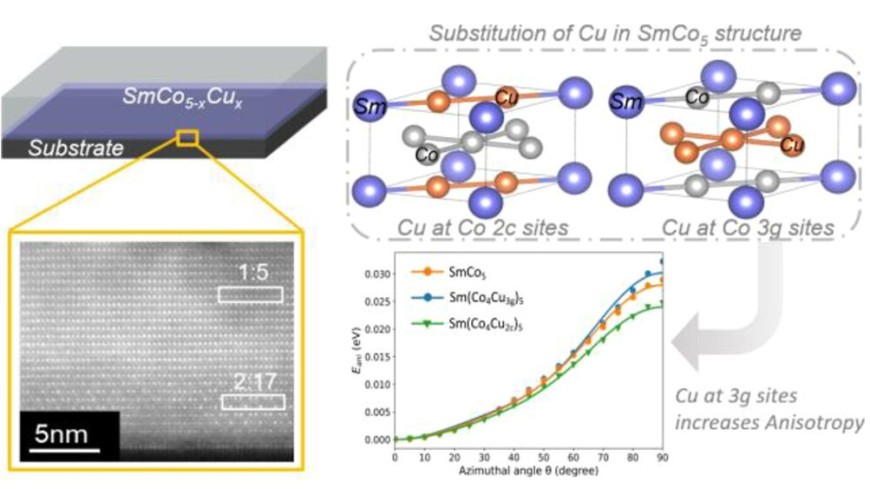Element-Specific Study of Magnetic Anisotropy and Hardening in SmCo5–xCux Thin Films
New publication
2023/09/22

This work investigates the effect of copper substitution on the magnetic properties of SmCo5 thin films synthesized by molecular beam epitaxy. A series of thin films with varying concentrations of Cu were grown under otherwise identical conditions to disentangle structural and compositional effects on the magnetic behavior. The combined experimental and theoretical studies show that Cu substitution at the Co3g sites not only stabilizes the formation of the SmCo5 structure but also enhances magnetic anisotropy and coercivity. Density functional theory calculations indicate that Sm(Co4Cu3g)5 possesses a higher single-ion anisotropy as compared to pure SmCo5. In addition, X-ray magnetic circular dichroism reveals that Cu substitution causes an increasing decoupling of the Sm 4f and Co 3d moments. Scanning transmission electron microscopy confirms predominantly SmCo5 phase formation and reveals nanoscale inhomogeneities in the Cu and Co distribution. Our study based on thin film model systems and advanced characterization as well as modeling reveals novel aspects of the complex interplay of intrinsic and extrinsic contributions to magnetic hysteresis in rare-earth-based magnets, i.e., the combination of increased intrinsic anisotropy due to Cu substitution and the extrinsic effect of inhomogeneous elemental distribution of Cu and Co.
G. Gkouzia, D. Günzing, R. Xie, T. Weßels, A. Kovács, A. T. N’Diaye, M. Major, J. P. Palakkal, R. E. Dunin-Borkowski, H. Wende, H. Zhang, K. Ollefs, and L. Alff
Inorganic Chemistry (2023).
DOI: 10.1021/acs.inorgchem.3c01768



